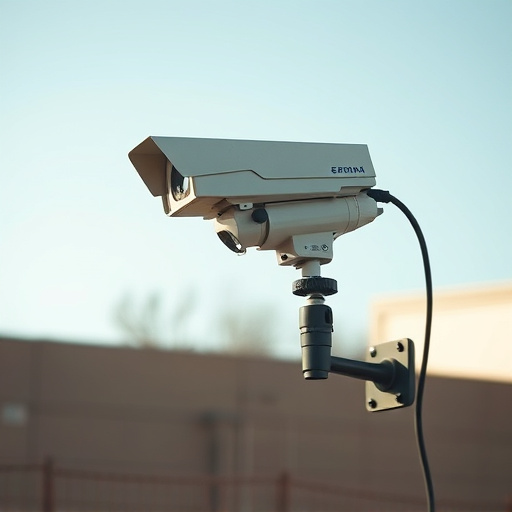Strategic dummy camera placement zones involve identifying high-risk areas and leveraging natural barriers for discreet surveillance. By positioning cameras in unexpected, less visible spots like side gates, balconies, and alleyways, you create an illusion of enhanced security, deterring intruders and providing peace of mind through effective decoy tactics integrated with real-time monitoring systems.
“Maximize your home or business security with strategic dummy surveillance camera placement. This guide offers valuable insights into enhancing your safety network by strategically positioning decoys. Learn how to identify high-risk areas, utilize natural barriers, and angle cameras for maximum coverage. Discover misdirection tactics to confuse intruders and integrate dummy setups with existing systems for comprehensive protection. Explore these tips for effective strategic dummy camera placement zones.”
- Evaluating High-Risk Areas for Optimal Placement
- Leveraging Natural Barriers for Discreet Surveillance
- Strategizing Camera Angles for Maximum Coverage
- Misdirection Tactics: Deceptive Dummy Camera Setup
- Integrating with Existing Security Systems for Comprehensive Protection
Evaluating High-Risk Areas for Optimal Placement
When evaluating strategic dummy camera placement zones, it’s crucial to pinpoint high-risk areas within your property or facility. These are places where unauthorized access, theft, vandalism, or other security threats are more likely to occur. By focusing on these zones, you maximize the deterrence effect of dummy cameras, as their visible presence can significantly discourage potential criminals.
Consider factors like past security incidents, high foot traffic areas, and entry/exit points when determining optimal placement. Strategically placing dummy cameras in these high-risk areas sends a clear message that any attempt at illicit activity will be closely monitored, enhancing overall security and peace of mind.
Leveraging Natural Barriers for Discreet Surveillance
Leveraging natural barriers, such as trees, bushes, and walls, can be a strategic way to achieve discreet surveillance with dummy camera placement. By positioning these cameras behind or within natural obstacles, you create an invisible security network that blends seamlessly into the environment. This technique is particularly effective in residential areas, where residents often prioritize aesthetics over extensive security measures.
Strategic dummy camera placement zones should consider these natural barriers to maximize coverage while maintaining a low-key presence. For instance, mounting cameras on existing structures like fences or pergolas can provide broad angles of view while remaining hidden from direct line of sight. This smart approach not only enhances home security but also respects the beauty and privacy of the surroundings, making it an attractive option for those seeking to protect their properties without sacrificing ambiance.
Strategizing Camera Angles for Maximum Coverage
When planning strategic dummy camera placement, understanding angles is key. Cameras positioned at oblique or high angles can capture a wider area, acting as guardians against blind spots. Lowered cameras, on the other hand, are ideal for detailed surveillance of specific points. For comprehensive coverage, a mix of angles is best; aligning them with potential entry points and high-risk areas ensures a robust security network.
Strategic zones include front entrances, backdoors, windows, parking lots, and perimeter fences. Dummy cameras placed in these locations send a clear message to intruders while providing valuable footage for review. By mimicking real camera positions, they create an illusion of enhanced security, deterring potential threats and offering peace of mind.
Misdirection Tactics: Deceptive Dummy Camera Setup
Misdirection tactics can be a powerful tool in security, and strategic dummy camera placement is an effective way to achieve this. By setting up fake cameras in unexpected zones, you create a false sense of security or surveillance, potentially deterring would-be intruders. These strategically placed dummy cameras can be positioned in areas that are less visible but still key points within the property’s layout.
For instance, consider placing a realistic-looking dummy camera near an entry point that isn’t immediately obvious from the street, like a side gate or an alleyway. Similarly, positioning them above common access points, such as windows or balconies, can be highly effective in luring potential thieves into a false sense of exposure. This clever use of misdirection adds an extra layer of security to your space.
Integrating with Existing Security Systems for Comprehensive Protection
One of the key aspects of effective security is seamless integration between physical dummy surveillance cameras and existing security systems. Strategically placing these fake cameras within critical zones acts as a powerful deterrent, enhancing the overall security posture. By mimicking real surveillance equipment, dummy cameras create an illusion of comprehensive monitoring, making potential intruders think twice before attempting any malicious activity.
When implementing strategic dummy camera placement, it’s crucial to consider areas with high foot traffic, entry points, and sensitive assets. For example, placing realistic-looking dummy cameras near doors, windows, and valuable equipment can significantly reduce the risk of break-ins or theft. Integrating these decoys into existing security system networks allows for real-time monitoring, alerts, and remote access, ensuring a comprehensive and coordinated response to any security incidents.
Strategic dummy surveillance camera placement is a multifaceted approach that combines risk assessment, natural barriers, and clever misdirection. By evaluating high-risk areas, leveraging existing structural elements, and integrating with existing security systems, you can create an effective yet discreet surveillance network. Remember, the key to successful dummy camera setup lies in maximizing coverage while providing false senses of security – a true game-changer for enhancing any facility’s protection.
